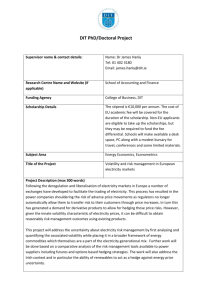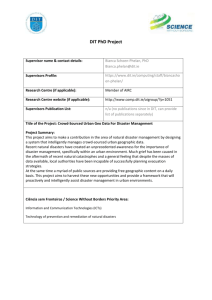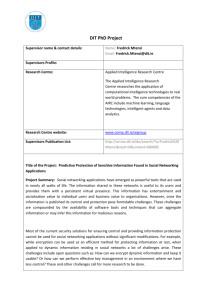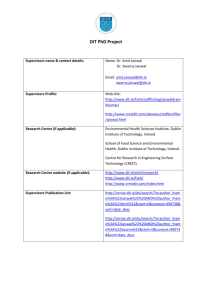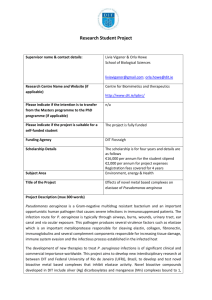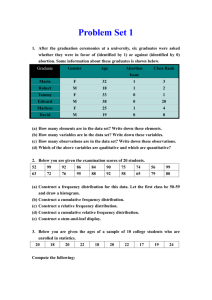Development of cement-based batteries to deliver sustainable
advertisement
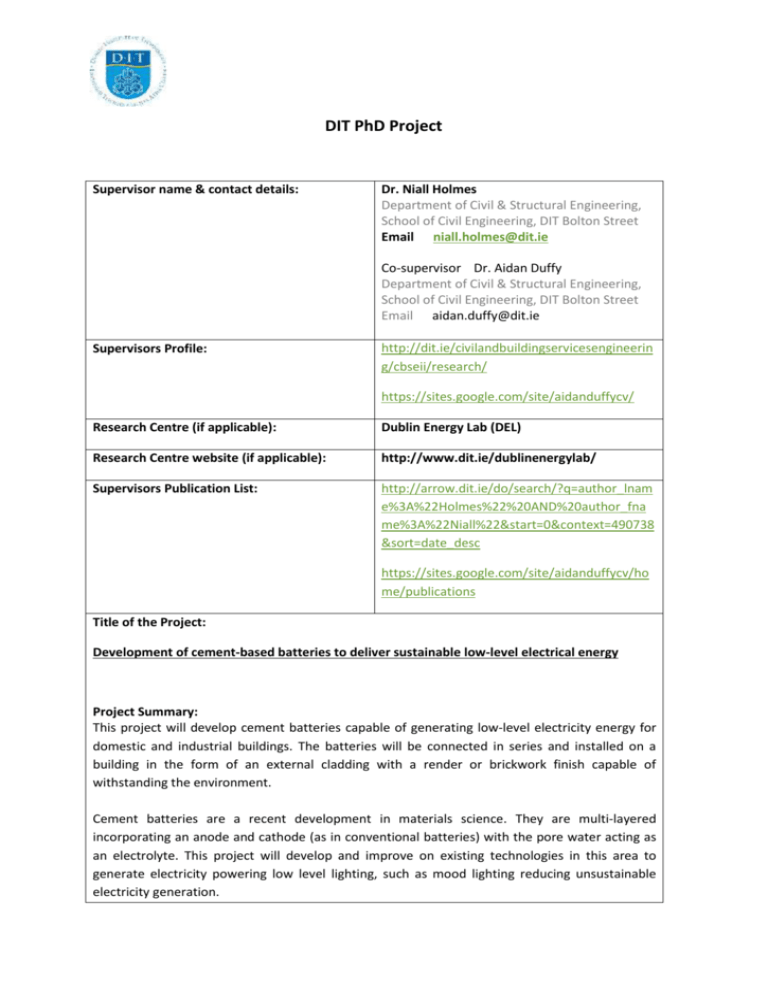
DIT PhD Project Supervisor name & contact details: Dr. Niall Holmes Department of Civil & Structural Engineering, School of Civil Engineering, DIT Bolton Street Email niall.holmes@dit.ie Co-supervisor Dr. Aidan Duffy Department of Civil & Structural Engineering, School of Civil Engineering, DIT Bolton Street Email aidan.duffy@dit.ie Supervisors Profile: http://dit.ie/civilandbuildingservicesengineerin g/cbseii/research/ https://sites.google.com/site/aidanduffycv/ Research Centre (if applicable): Dublin Energy Lab (DEL) Research Centre website (if applicable): http://www.dit.ie/dublinenergylab/ Supervisors Publication List: http://arrow.dit.ie/do/search/?q=author_lnam e%3A%22Holmes%22%20AND%20author_fna me%3A%22Niall%22&start=0&context=490738 &sort=date_desc https://sites.google.com/site/aidanduffycv/ho me/publications Title of the Project: Development of cement-based batteries to deliver sustainable low-level electrical energy Project Summary: This project will develop cement batteries capable of generating low-level electricity energy for domestic and industrial buildings. The batteries will be connected in series and installed on a building in the form of an external cladding with a render or brickwork finish capable of withstanding the environment. Cement batteries are a recent development in materials science. They are multi-layered incorporating an anode and cathode (as in conventional batteries) with the pore water acting as an electrolyte. This project will develop and improve on existing technologies in this area to generate electricity powering low level lighting, such as mood lighting reducing unsustainable electricity generation. With the increasing cost of fossil fuel electricity generation and the resulting environmental pollution from it, there is an ongoing need for clean and renewable ways to produce power. One such method is by using batteries. However, as single conventional batteries have limited energy generation, are environmentally unfriendly and perform poorly in harsh environments, their use as an electricity producer has been limited. The research questions to be answered include: Optimum utilisation of the panel including volume of pore solution / electrolyte Capacity of the battery to be rechargeable using solar energy incident on the structure thus providing a new level of “smartness” to smart structures. Optimising the components in the cement matrix that makes up the battery anode and cathode to form a small scale monolithic slab to improve handling as it is installed. Improving the power outputs through increasing the electrolyte ionic conductivity, decreasing the resistivity in the anode and optimising the water to cement (w/c) ratio to enhance the ionic conductivity. Ciência sem Fronteiras / Science Without Borders Priority Area: Engineering and other technological areas New technologies in constructive engineering
